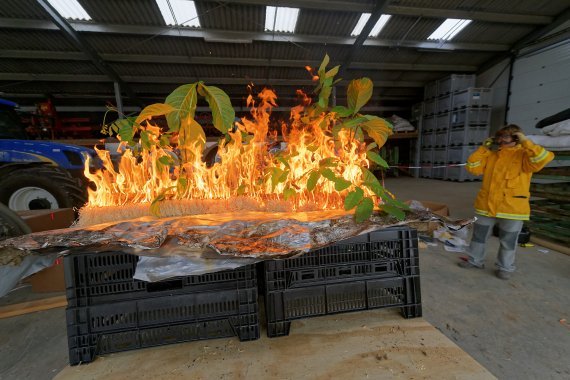Photo’s Guy Ackermans
At first sight it looks like vandalism. Dozens of half burned young tropical African plants are displayed on a pallet, all planted in pipes that serve as pots. The leaves are hang down sadly, and some of the green colour has burned away. Only five metres further there are seven plants awaiting the same fate. Researcher Imma Oliveras (Marie Curie-Fellow) and professor Else Pastor apply the right amount of wood wool to start a small savannah fire.
Professor Pastor is a chemical engineer at the University of Barcelona and is specialized in fire. She was flown here especially for this job. In a few days about 50 of these small fires are generated. In total 27 different forest and savannah plants will undergo a short fire of exactly 40 seconds. Sensors in the fire will accurately measure the temperature. This is scientifically justified burning.
Yet the atmosphere is light-hearted and slightly excited. Curious colleagues come to take a look. The news spreads like…exactly, like wildfire. Elmar Veenendaal, associate professor of the department of Plant Ecology and Nature Conservation group is enjoying it. But quickly explains that this is a serious experiment. The test simulates a real savannah fire.
Such a fire in real life has many effects that we do not totally understand. Some plants survive the fire, others don’t. Why, this is the question that Veenendaal wants to answer. Is this related to their root system? The curiosity is mainly focused on the species found in the transition area between savannah and forest. ‘Of the typical forest or typical savannah species we already have some insights into how that works. But for the transition species this is not clear yet.’
It took months of preparations to set up this fire experiment. In the greenhouses of Radix hundreds of each of the 27 different types of plants were grown for months under different rain systems. From rains on the driest savannah lands to the wettest forests. Meanwhile the plants are continuously monitored on their photosynthesis, starch storage, rooting etc. After the burning, the plants will be returned to the greenhouses for a couple of months to monitor the effects.


